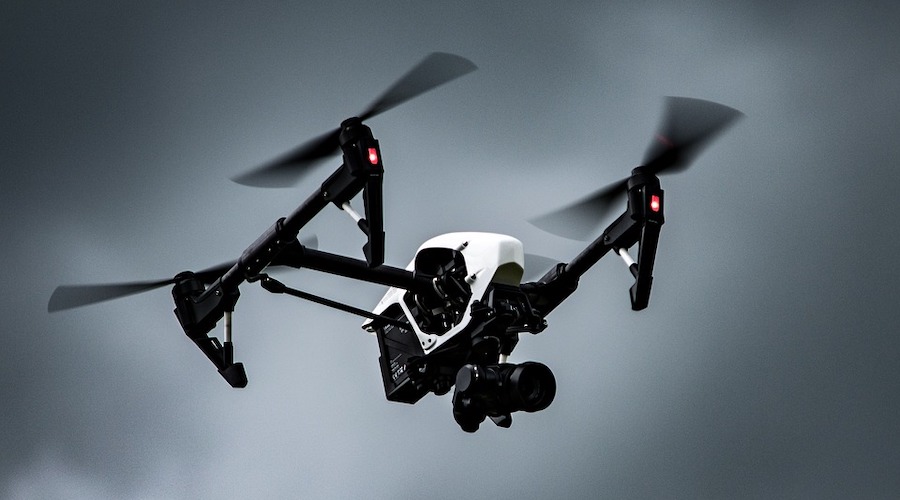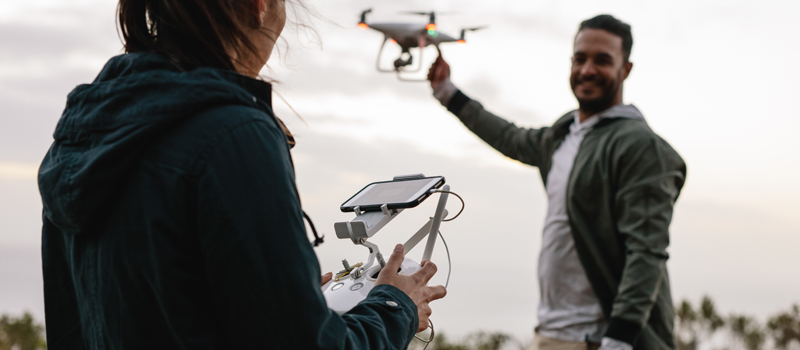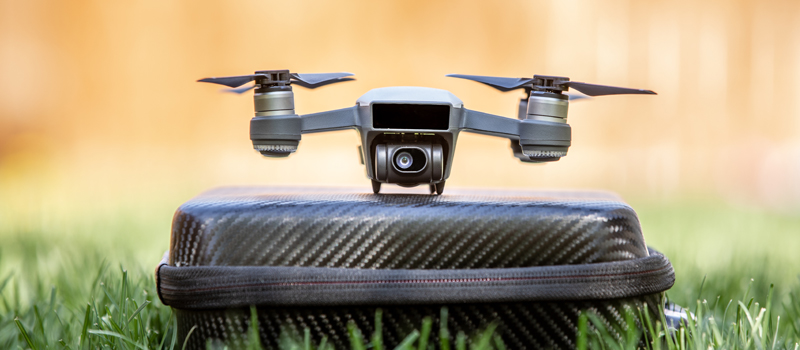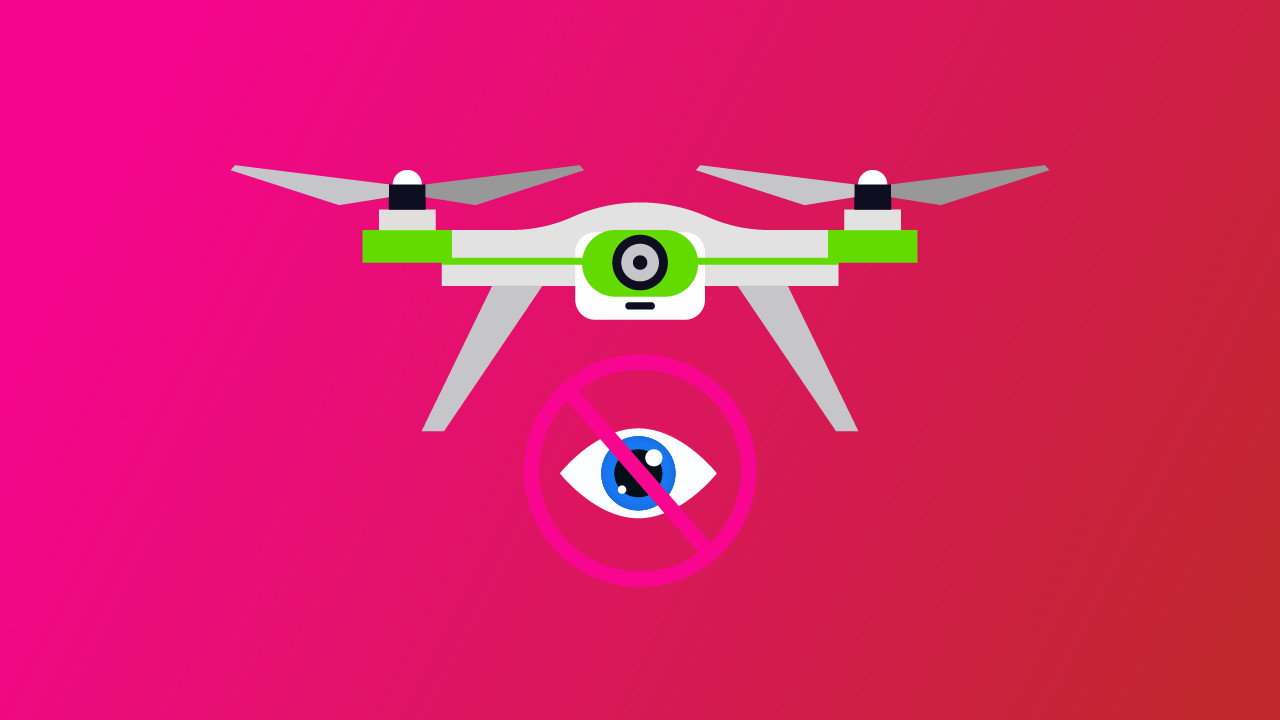-
Types of drone inspection jobs
- 1. Roof inspection
- 2. Industrial inspection
- 3. Construction or mining inspection
- 4. Inspection of power lines
-
What equipment do you need before you can offer professional inspection services?
- 1. A drone with an interchangeable payload
- 2. A drone with electromagnetic shielding
- 3. High-resolution camera with smart features
- 4. A drone with GPS guidance
- 5. Photogrammetry software
- 6. IR thermal camera
-
How well does a drone inspection job pay?
-
Final thoughts
Building a career as a professional drone pilot has become more attractive as ever. Not only is there a growing market for professional drone services, but the selection of viable services continues to diversify and give more opportunities for aspiring newbies.
This means that there are now a lot of other options for drone pilots aside from offering drone photography services or selling drone photos. Inspection services are an alternative field that require a higher level of technical knowledge but also offers very lucrative opportunities. What are drone inspection services and how can you get in on this action?
Types of drone inspection jobs
An ‘inspection’ job may seem like such a broad term to describe any service that a drone pilot can offer. This is a pretty fair assessment because drone inspection jobs can be divided into a few different categories based on the industry that requires it. Here are some of the most common:
1. Roof inspection
Rood inspection is a service that can be requested by roof repair companies, homeowners, real estate agents, insurance adjusters, and solar panel installers. The state and appearance of a property’s roof play a huge role in the value of the property. In the event of a natural disaster, homeowners and roof repair companies may benefit from the in-depth information that a professional roof inspector can deliver. If a roof becomes damaged, insurance adjusters may need to inspect the roof in question to verify any insurance claims.
Obviously, roof inspection isn’t a new job. Before drones, roof repair and inspection crew simply climbed up to a roof using ladders to take photos and make measurements. This can be a tedious, dangerous, and resource-intensive process that requires the work of several people, all of whom are exposed to a constant fall hazard.
Doing a roof inspection job with a drone involves more than just flying above a roof and taking photos. You can add a lot of value to your service by generating a 3D model of the roof. This will allow your client to navigate the model freely, zoom in on individual features, and make an infinite number of measurements.
2. Industrial inspection
Inspection of large-scale industrial equipment has always been a challenge for measly humans. Not only do workers need to scale large structures and expose themselves to hazards, but operations typically have to be shut down temporarily to make time for a scheduled inspection. For large power plants and manufacturing plants, doing an inspection of storage vessels and cooling towers could warrant shutting down the plant for a week or two, resulting in losses in revenue.
Drones are well-suited to doing this job safer and faster. As you can imagine, a drone can fly up a large structure and do several revolutions around it in just a few minutes. This can all be done by a single drone pilot, all without having to risk anyone’s life. Drones can provide a real-time video feed as they fly to let a team on the ground asses the condition of the equipment they are inspecting.
Industrial inspection is typically done for infrastructure or equipment that is both critical and expensive. This means that a drone crashing while doing an industrial inspection can have very costly consequences, both for the drone pilot and the client. This emphasizes a certain skill level expected of industrial drone inspectors, particularly for flight through FPV.
3. Construction or mining inspection
Landing a drone inspection job for a construction or mining project can be particularly lucrative because of how long your services will be needed. Drone services can be useful for these projects from planning to execution and maintenance. There’s even a chance of getting a position as an in-house drone inspector, especially for firms that specialize in this industry.
Both construction and mining projects will benefit from a drone’s modeling capabilities during planning. A drone can do several fly-bys of the planned project site, eventually generating a 3D model of its topography. This model can be very useful in laying down roads, estimating how much excavation will be needed, and planning slope stabilization sites. Compared to traditional ground-based land survey methods, a drone inspection can be done faster and might even be cheaper.
While the project is being constructed, regular drone inspection can be done as a progress monitoring tool. Aerial photos and models can be captured and relayed to the project management team even if they cannot physically visit the site. Drones can also be used to identify hazardous conditions or to estimate the stockpile of materials.
After a project has been completed a final round of drone inspection is typically done to assess the quality of the finished project. A drone can even be augmented with a thermal camera to determine if there are sections of a building that need better insulation. At this point, a drone inspector can even be tasked to take aerial photos for presentation to investors or the board of the company.
4. Inspection of power lines
Inspecting power lines for damage can be an intimidating feat for mere humans because of the inherent danger posed by damaged power lines. There’s also the fact that power lines can run for several miles, making inspecting a whole section of them very tedious and challenging for people that are naturally rooted to the ground.
This is where drone-mounted thermal cameras can prove to be very useful. By using a thermal camera, a drone pilot can easily spot thermal anomalies along power lines which may be indicative of damaged sections. All this can be done without a single person having to work near the damaged power lines. Moreover, drones can easily fly several miles along the corridor defined by power lines in just a single battery cycle – about 25 minutes or so.
One thing that drone pilots need to watch out for when inspecting power lines is the electromagnetic interference that the power lines naturally emit. If a drone flies too close, this interference can get so severe that it causes loss of control of the drone. This is something that a drone pilot needs to anticipate and prepare for.
What equipment do you need before you can offer professional inspection services?
There is a lot of profit to be made in drone-based industrial inspection, so it’s not a surprise that it requires significant capital, as well. You might not need all of these pieces of equipment, but you can offer a more versatile selection of services if you have more of them.
1. A drone with an interchangeable payload
Most drones come with a camera by default. This isn’t such a bad deal as you can already offer roof inspection or industrial inspection services with just a good camera drone. However, more technical (and more expensive) inspection jobs can be available to you if you can change up your drone’s payload. You may need a camera with a zoom lens to do close monitoring of a project site. You can also swap in a thermal camera to look for hotspots in electrical lines or in a finished construction site.
The bad news is that drones with interchangeable payloads are typically also some of the most expensive. A few noteworthy examples are the Matrice 600 from DJI and the Typhoon H520 from Yuneec.
2. A drone with electromagnetic shielding
When it comes to electromagnetic interference, this is the fact that you need to keep in mind: all electronic devices can emit electromagnetic signals which may mess with your drone’s communication and electronic systems. At worst, this could lead to a loss of control of your drone. This would be fine if you’re flying in an open field, but decidedly less so if you’re flying near power lines or a cell tower.
If you intend to fly near large industrial or electrical equipment, then a drone with electromagnetic shielding is certainly worth the investment. This shield is typically in the form of a ferromagnetic layer that acts as a Faraday cage to keep out any nearby magnetic waves. The Mavic 2 Enterprise and the Matrice 210 drones from DJI are good examples of drones designed with electromagnetic interference protection.
3. High-resolution camera with smart features
Nowadays, any drone pilots offering professional services should have a drone with a camera that can shoot, at least, 4K videos and 12 MP stills. Fortunately, these aren’t exactly high-end specs anymore. Even ultra-portable drones, like the DJI Mavic Air, offer these features at a relatively friendly price.
Fancy camera modes aren’t that important in industrial inspection, but you may want to get a camera drone with some form of object recognition and subject tracking feature. An automated tracking feature will come in handy if you’re monitoring a worksite and are tasked with keeping a close on eye on certain vehicles or personnel.
4. A drone with GPS guidance
No matter what field you get into, you will almost certainly benefit from the automated flight features that only a GPs-equipped drone can provide. With automated flight functions, you can simply program a drone to fly along a designated flight path while doing topography modeling or worksite inspection. It will also allow you to simply set a destination and let the drone take over flight functions while you pan the camera around to look for damaged sections along electrical lines or in a cell tower.
5. Photogrammetry software
You don’t need any fancy equipment to create a 3D model of the rooftop of a house or the terrain of a planned project site. All you need is a drone with a good camera and an equally good photogrammetry software package.
Photogrammetry is a technique that stitches together a series of overlapping images to deduce information about the depth of individual features, eventually generating a 3D model. This is a simple technique that can be done even just with your camera phones. With a drone, photogrammetry can be used to create 3D models of large-scale structures and vast areas of land.
A good photogrammetry software package should include modules for planning, data processing, and modeling. Planning includes defining the scope of the job you want to do and communicating with the drone to capture all the necessary images. These images, which could easily number up to a hundred or more, are then stitched together using the software’s algorithm to create a point cloud representing the model’s features. A number of different output options are possible with photogrammetry, including topographic models and orthomosaics.
6. IR thermal camera
An infrared thermal camera is one of the biggest upgrades you can make to your drone inspection setup. With a thermal camera, your drone can be used to detect energy that would not have been visible to the naked human eye. With this tech, you detect thermal anomalies which may indicate the presence of damaged sections in industrial equipment, buildings, or power lines.
It would be even better if you can get a dual-camera setup that combines a thermal camera with a visual sensor. By combining images from the two, you can more accurately identify the source of anomalous thermal energy values. With a good thermal camera setup, you might even spinoff your services and offer them to public safety agencies to aid in search and rescue, law enforcement, or firefighting.
How well does a drone inspection job pay?
Estimating a range of potential earnings from a drone-based job is difficult because this industry is still way too young to have clearly defined standards. Earnings can vary greatly from one type of service to another, and the standards may even differ across different states.
That being said, industrial inspection is still a somewhat specialized version of drone-based services. Because of the small number of drone pilots who offer this service, you can expect higher rates in this industry compared to more common ones, such as drone filmmaking and real estate photography.
Even within the field of industrial inspection, rates may vary based on how technical your services are or how much risk you’re taking on. Freelancer gigs for roof inspection or construction inspection start at $50 per hour. If you can offer 3D modeling services on top of being able to fly a drone, you should be able to increase your rates to as high as $250 per hour.
Construction or mining firms have been known to offer in-house positions for drone pilots because of how long projects take. If you can score such a gig, you have the potential to earn anything between $50,000 to $75,000 per year.
Inspection jobs for power lines, cell towers, and industrial equipment are among some of the most technically demanding and risky jobs that drone pilots can take. Fortunately, this also means that these jobs demand premium rates. Industrial inspection jobs in these fields start at $300 per hour. Most companies prefer offering a fixed-price scheme because of the uncertainty on the time it would take to finish an inspection job of this magnitude. Drone pilots have been known to get paid up to $5000 for a single cell tower inspection job.
Specializing in thermography is a good way to increase your earning potential as a drone pilot. Andrew Dean, a famous drone pilot who took up advanced thermography certification courses, was able to increase his yearly earnings from $30,000 to $200,000.
Final thoughts
It’s often said that the two things you’ll need to grow your earning potential as a drone pilot are experience and specialization. While experience is something that you naturally build on in time, you can work on being specialized as early as now. Going into industrial inspection is a surefire way to earn higher rates via specialization.
While it’s true that you stand to earn a lot by going into industrial inspection, it’s also a field that requires a high amount of investment, both in terms of finances and skills development. High-end drone is equipment is expensive, especially if you’re going for a thermal camera add-on or a drone model with an interchangeable payload. You’ll also need to be a very good drone pilots if you’re flying near large structures, not to mention the skills you’re going to need to process aerial images for 3D modeling or to interpret thermal images.
The efforts and the investment should all be worth it once you secure a few contracts. With the rates of industrial inspection jobs nowadays, it should only take one or two gigs to hit the breakeven point.



